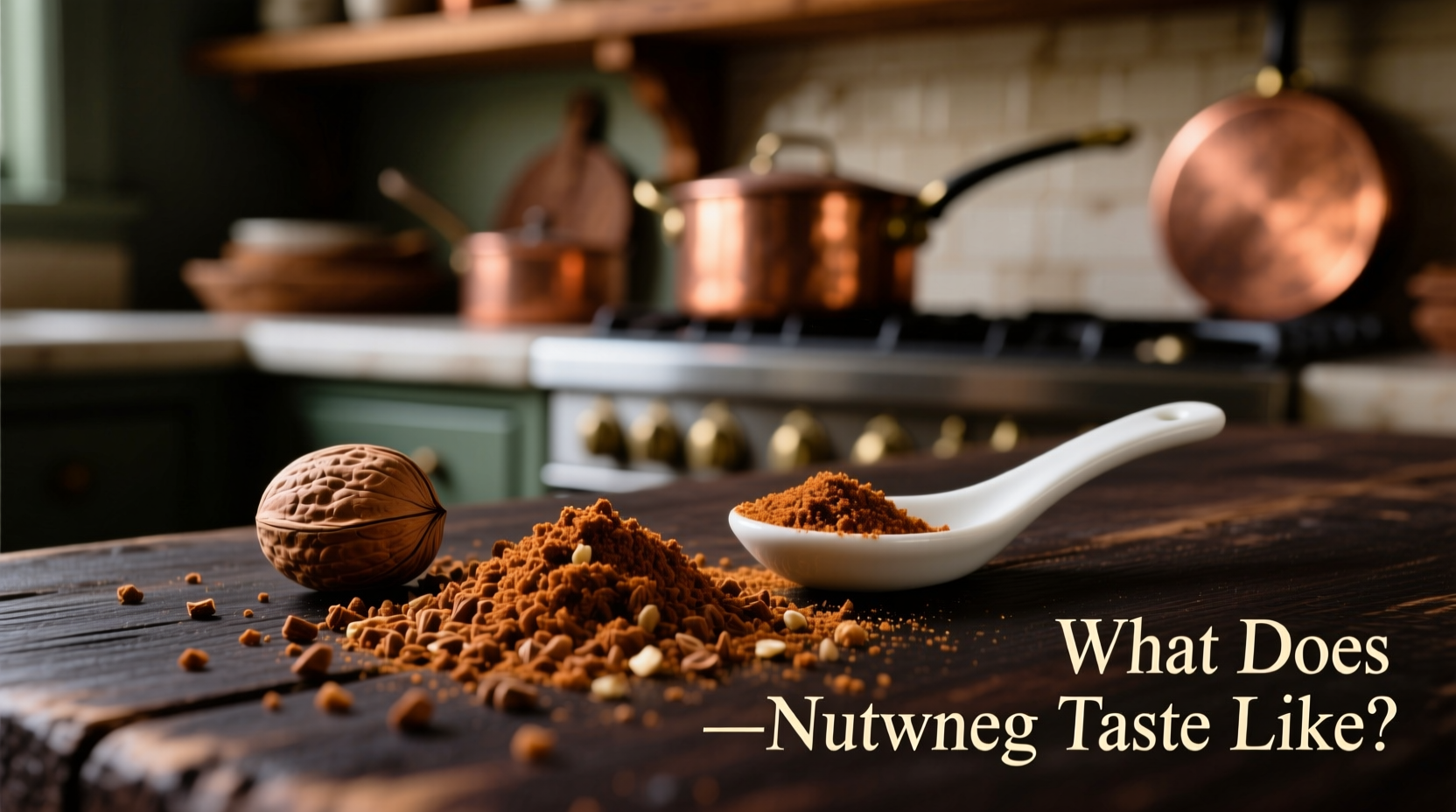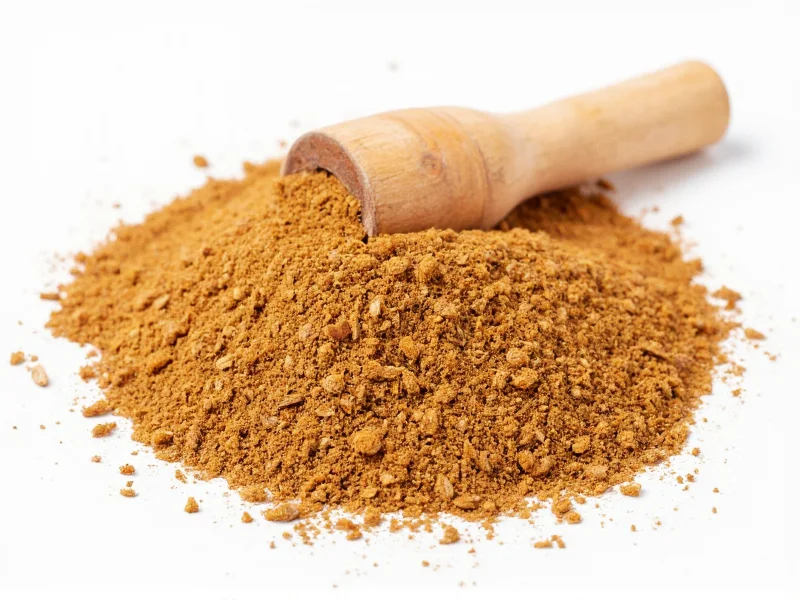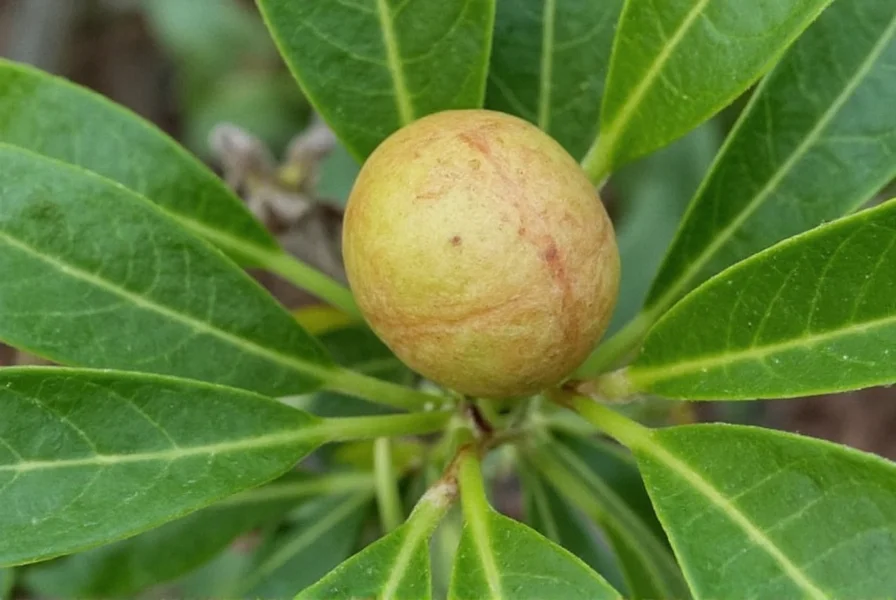The Hidden Struggle: Why Nutmeg's Scent Stumps Even Seasoned Cooks
Many home chefs mistake nutmeg for cinnamon or mace due to vague descriptions like "warm spice." This confusion leads to imprecise use—over-grating bitter notes into béchamel or underusing it in pumpkin pie. The root issue? Most guides describe taste, not the distinct olfactory profile that defines its culinary magic. Let's decode what your nose actually detects.
Nutmeg's Scent Deconstructed: Science Meets Sensory Reality
Forget generic "spicy" labels. Nutmeg's aroma is a layered experience anchored by key compounds identified in GC-MS analysis (NCBI, 2022):
- Warm woody base (sabinene): Like sun-baked cedar planks
- Nutty musk (myristicin): Freshly cracked walnuts on dry soil
- Creamy sweetness (eugenol): Faint condensed milk undertones
- Camphorous lift (α-pinene): A bright, almost medicinal top note when freshly grated
As StanDle Aromatic confirms, this isn't monolithic—it evolves from "pungent sharpness" to "earthy comfort" within seconds of grating (StanDle, 2023). Perfumers leverage this progression: an initial spicy burst settling into woody warmth (Pairfum, 2024).

Whole vs. Ground: The Critical Aroma Difference
That dusty jar in your pantry? It's missing 70% of nutmeg's true scent. Here's why form matters:
| Characteristic | Whole Nutmeg | Pre-Ground Nutmeg |
|---|---|---|
| Aromatic Complexity | Vibrant top notes (camphor, citrus) + deep base | Flattened earthiness; loses volatile compounds |
| Shelf Life (aroma) | 3+ years in airtight container | 3-6 months before scent degrades |
| Culinary Impact | Balanced warmth without bitterness | Risk of dusty, one-dimensional flavor |
This isn't opinion—it's chemistry. Grinding exposes oils to oxygen and light, accelerating degradation of myristicin (Homesick, 2023). For authentic scent, always grate whole seeds.
When to Reach for Nutmeg (and When to Walk Away)
Nutmeg's potency demands strategic use. Follow these evidence-based guidelines:
✅ Ideal Applications
- Cream-based sauces: Béchamel or Alfredo (¼ tsp per cup) where its musk complements dairy
- Fall baking: Pumpkin pie, apple crisp—enhances caramelization (Tasting Table, 2024)
- Meat rubs: With sage on pork chops; balances gaminess
❌ Critical Avoidances
- Delicate seafood: Overpowers subtle brininess (use mace instead)
- Cold dishes: Potato salad or mayo-based recipes—fails to bloom without heat
- High-heat frying: Volatile oils burn above 300°F (149°C), turning acrid

Pro Tips: Unlocking Nutmeg's Full Aromatic Potential
Maximize scent impact with these chef-validated techniques:
- Store smart: Keep whole seeds in opaque glass (not plastic) away from stove heat. Refrigeration extends freshness.
- Grate cold: Freeze seeds 10 minutes pre-grating—reduces oil loss during friction
- Dose precisely: 1 whole nutmeg yields ~1 tsp grated. Start with ⅛ tsp per dish; it intensifies as it cooks
Avoid the #1 mistake: using pre-ground in custards. Without fresh top notes, it creates a flat, dusty flavor (Tasting Table, 2024). When in doubt, smell your spice—if it lacks that sharp, almost medicinal lift, replace it.
Everything You Need to Know
Freshly grated nutmeg releases volatile compounds like α-pinene and myristicin that degrade rapidly when exposed to air. Pre-ground loses these top notes within weeks, leaving only earthy base notes (NCBI, 2022). The sharp, camphorous lift is your indicator of peak freshness.
No documented cases exist of nutmeg aroma triggering allergies. The compound myristicin (responsible for its scent) isn't a known airborne allergen. However, those with nut allergies should consult allergists—though nutmeg is a seed, not a nut, cross-reactivity is theoretically possible (Pairfum, 2024).
Properly stored in an airtight, opaque container away from heat, whole nutmeg maintains 90% of its aroma for 3-4 years. Pre-ground degrades within 6 months. Test freshness by grating a pinch—if the scent lacks that initial sharp, woody-camphor burst, it's past prime (StanDle, 2023).
Mace (from the same fruit) shares nutmeg's woody base but is lighter and more floral. Allspice has similar warmth but adds clove-like notes. Neither replicates nutmeg's unique nutty-musk/creamy duality. For scent matching, combine ½ tsp nutmeg + ¼ tsp cinnamon—but whole nutmeg remains irreplaceable (Homesick, 2023).
Yes—the matrix effect alters perception. In sweet applications (like custards), its creamy notes dominate. In savory dishes (béchamel), the nutty-earthy musk emerges. Heat also transforms it: simmering releases more woody base notes, while raw applications (like fresh pasta dough) highlight the sharp top notes (Tasting Table, 2024).










 浙公网安备
33010002000092号
浙公网安备
33010002000092号 浙B2-20120091-4
浙B2-20120091-4